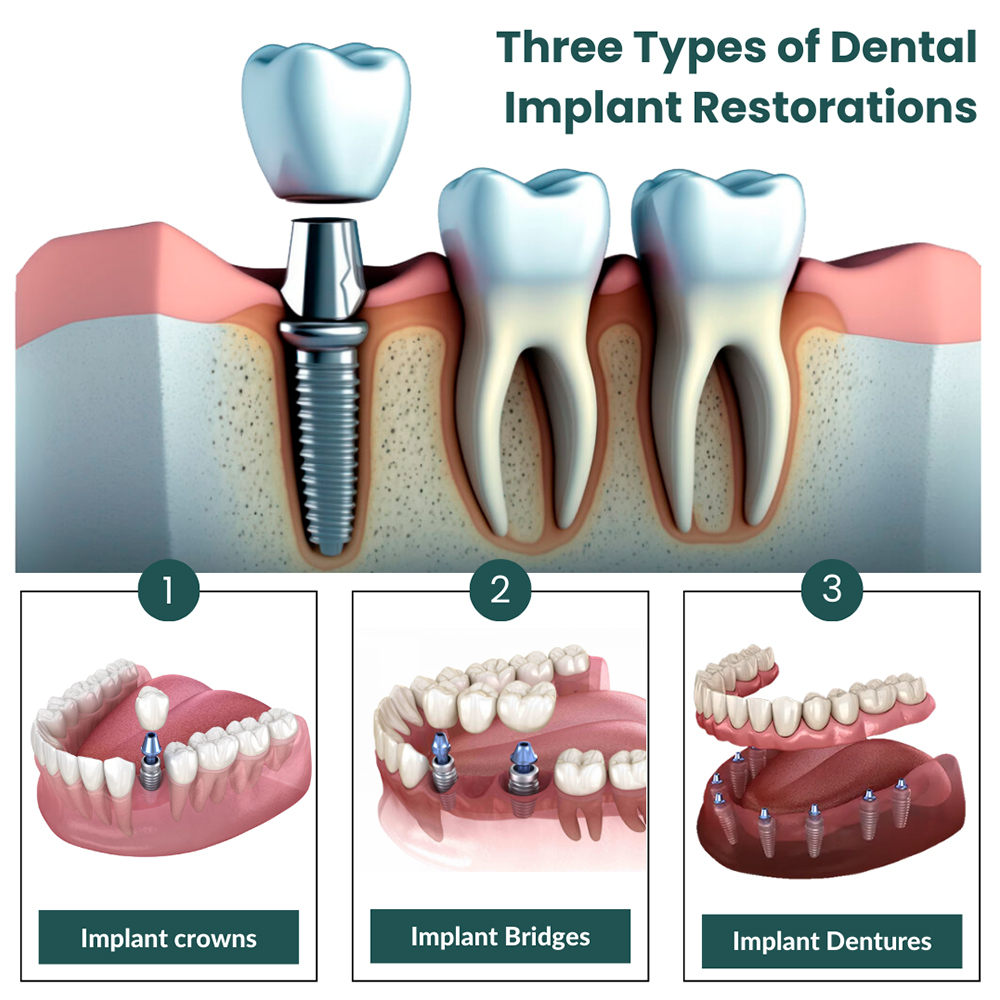What Does Dental Sense Do?
The 10-Second Trick For Dental Sense
Table of ContentsDental Sense Can Be Fun For AnyoneExcitement About Dental SenseThe 10-Second Trick For Dental SenseThe Main Principles Of Dental Sense
are medical devices surgically dental implanted into the jaw to bring back an individual's capability to chew or their look. They provide support for synthetic (fake) teeth, such as crowns, bridges, or dentures. When a tooth is shed due to injury or condition, a person can experience problems such as quick bone loss, malfunctioning speech, or adjustments to eating patterns that lead to discomfort.Dental implant systems are composed of an oral implant body and oral implant abutment and might also consist of a joint fixation screw. Front tooth filling. The dental implant body is surgically placed in the jawbone instead of the tooth's origin. The oral implant joint is usually connected to the dental implant body by the joint addiction screw and prolongs via gums into the mouth to support the connected man-made teeth
(https://penzu.com/p/6de5c74cda18cc8f)Structure of The Oral Implant System picking dental implants, speak with your oral supplier regarding the prospective benefits and threats, and whether you are a prospect for the treatment. Points to think about: Your total health and wellness is an important variable in establishing whether you are a great prospect for dental implants, how much time it will certainly require to heal, and the length of time the implant might remain in place.
Smoking might impact the recovery process and decrease the long-lasting success of the dental implant. The recovery procedure for the dental implant body might take numerous months or longer, during which time you usually have a momentary abutment instead of the tooth. the oral implant treatment: Carefully adhere to the dental hygiene instructions provided to you by your dental copyright.
Some Known Factual Statements About Dental Sense
Implant failure can result in the demand for an additional surgery to take care of or change the implant system. Restores the ability to eat Restores aesthetic look Aids keep the jawbone from reducing as a result of bone loss Maintains the wellness of the bordering bone and gums Assists maintain adjacent (close-by) teeth secure Enhances high quality of life Damage to surrounding natural teeth throughout dental implant placement Injury to the surrounding cells during surgery, such as sinus perforation Injury throughout surgical treatment (for instance, crack of bordering jawbone) Inadequate feature, such as feeling like the teeth do not attack with each other usually A sensation that the tooth is loose or turning in position arising from a joint screw loosening Implant body failing (looseness of the implant body) as a result of systemic infection, which may be more most likely in patients with uncontrolled diabetes as a result of regional infection in bone and gum tissues sustaining the dental implant body because of delayed recovery, which may be extra most likely in clients that smoke Difficulty cleansing the periodontals around the dental implant, leading to inadequate oral hygiene Unattended gum disease Post-surgical tingling because of nerve impingement or damage Constantly notify health care companies and imaging service technicians that you have dental implants prior to any type of magnetic vibration imaging (MRI) or x-ray treatments.
FDA is not familiar with any kind of damaging occasions reported for MRI or x-ray treatments with dental implants. Dental implants systems are generally made from products that adhere to international agreement requirements of the International Company for Standardization (ISO) or ASTM International. These criteria have information of what makes a safe product.

An oral implant is a framework that replaces a missing tooth. With screw-like devices, the specialist inserts a dental implant right into the jawbone, and it serves as a support for a synthetic tooth, called a crown. A tool called a joint links the fabricated tooth to the dental implant. The crown is tailor-made to fit the person's mouth and match the shade of their teeth.
Little Known Facts About Dental Sense.
Some people are not eligible for oral implant surgical treatment. It is for oral cosmetic surgeons to operate individuals with: acute illnessuncontrollable metabolic diseasebone or soft cells disease or infectionIf these problems are settled, an individual can have the surgical treatment. In, oral doctors refrain from operating individuals with: If people with any of the above undergo dental implant surgical treatment, there is a greater threat of the dental implant falling short.

Dental implant surgical treatment is an individualized process. Give you time to heal. Connect the post and final crown, bridge or denture.
Next, your cosmetic surgeon will meticulously put the dental implant into your jaw. Your specialist will certainly rearrange your gums and shut the laceration with stitches. If your implant is near the front of your mouth, your dental expert will make a temporary tooth for Related Site you to put on until you recover. This way, you will not have a space in your smile while you recover.
Dental Sense - An Overview
Your supplier can tell you what to expect in your scenario. During the recovery phase, your jawbone should fuse to the oral implant. This procedure, called osseointegration, is vital for stability and lasting success. This process can take anywhere from 3 to 9 months. Sometimes, it may take longer.
As soon as your implant heals, your dentist can affix the joint (small port article) and your last repair (crown, bridge or denture). This typically takes regarding one hour to finish and may require a second minor surgery. You should not feel any type of pain during your oral implant procedure due to the fact that your company will utilize medication to numb your gum tissues.